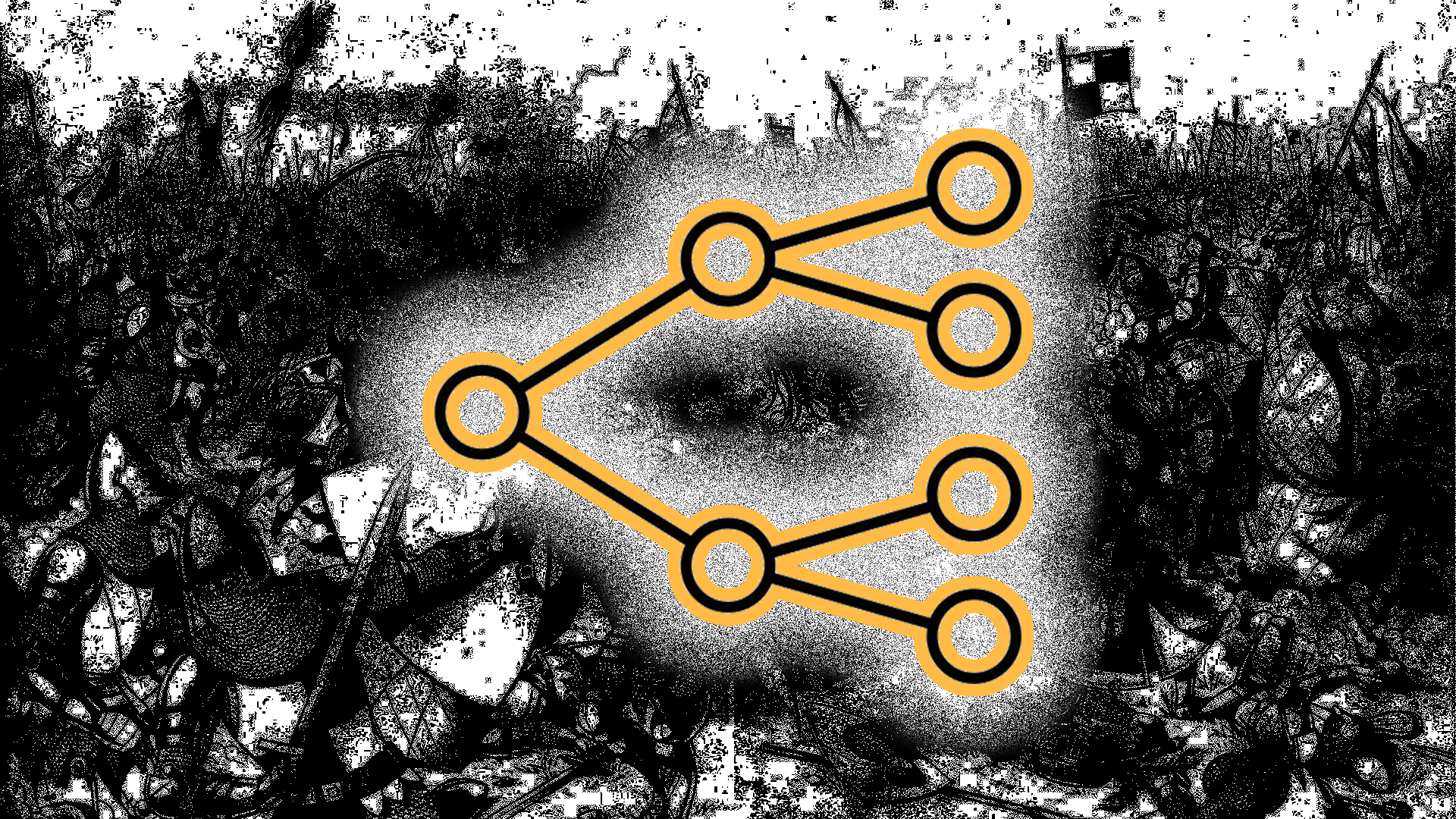
Dungeons, Dragons, and the Satanic Panic
During the late 1980s and ’90s, there was a grip on media focused on the religious morals of popular tabletop roleplaying games. The shining example, of course, was a popular TSR game: Dungeons and Dragons.
After a string of suicides, many people (especially those in religious communities) pointed fingers at the “one common cause” that “plagued” all of them. One might think, “Mental issues, home life, or maybe substance abuse?”. All of this was thrown out the window with Dungeons and Dragons involved. Many were passionate that this had been the sole reason their children were killing themselves.
Children with issues like James Egbert III, “Bink” (Ervon Pulling), and many others. These situations were taken advantage of by mourning parents like Patricia Pulling, religious groups, and media outlets. All of this would lead to a storm in the national media, a frenzy that would last over a decade
The Disappearance of James Dallas Egbert III
The pressures of great knowledge usually lack comfort. This is the case for James Dallas Egbert III. A child prodigy who entered Michigan State University, majoring in computer science, all at the age of 16.
While on paper Egbert seemed to be successful and should have been proud of his accomplishments, there was a hidden darkness that was held on to for far too long. Personal problems that were noticed but never acted upon included depression, pressure from parents, drug addiction, a sense of loneliness, and never coming to terms with his sexuality. These factors would all lead to the steam tunnel incident.
Steam Tunnel Incident
In August of 1979, Egbert wrote a suicide note and then consumed methaqualone (also known as quaaludes). Methaqualone is known for its sedative and hypnotic properties, which Egbert had secured in hopes of ending his life. He left his dormitory, where he then entered the steam tunnels, hoping to find an end to his suffering.
Halt!
Take A Moment and Support Knight’s Digest!
Adventurers, if you’ve enjoyed the content we’ve worked so hard to create, we humbly ask for your support. Running Knight’s Digest takes countless hours of dedication, creativity, and passion, and we’d love your help to keep our dungeon full of treasure (and coffee).
If you think we’ve earned it, consider donating to help us continue crafting the stories, resources, and ideas you love.
Make a one-time donation
Make a monthly donation
Make a yearly donation
Choose an amount
Or enter a custom amount
Your contribution is appreciated.
Your contribution is appreciated.
Your contribution is appreciated.
DonateDonate monthlyDonate yearlyEgbert survived the ordeal, wandering out of the tunnels after waking up the next day. He took refuge at a friend’s house. Around this same time, there was a convention in Wisconsin, where Gen Con XII (a table-top roleplaying seminar) was taking place. Attendees at the convention stated they had seen him there. Even after the suicide attempt, Egbert was taking comfort in what he loved, Dungeons and Dragons.
Disappearances and Private Investigators
It is now August 20th and official reports that Egbert is missing come five days after he was last seen. August 22nd of that same month is when the parents of Egbert hire a private investigator when his mother had raised the possibility that her son might have committed suicide. Not missing, not hurt, but had taken his own life. This alone makes it seem like he had a record of previous issues.
The man hired for this case was William Dear, a friend to the Uncle of Egbert. After learning that he was playing Dungeons and Dragons, he would go to the police, insisting that it must have had some correlation. The games would take place in the steam tunnels themselves. Speculation occurred that he was hurt or lost his way during this time.
For retribution’s sake, William Dear would later write the book “The Dungeon Master: The Disappearance of James Dallas Egbert III”. This would go into detail about how his thoughts at the time might have been rashed. He would later agree that there might have been other problems in Egbert’s life that would lead to these issues.
During this same time, there were also others with piqued interest in the case. On August 24th, an article from the university’s newspaper was released by Michael Stuart (article snippet below). This would be one of the first media interactions that would lead to the uprising that was the Satanic Panic.

Discovery
The search for James Egbert III continued for several weeks, unsuccessful. This would not be found out until later, but Egbert traveled to two other houses during this time, finally ending up in New Orleans via bus.
While in New Orleans, Egbert would again try and take his life—this time with a cyanide compound, which would also fail. He would then travel to Morgan City, Louisiana where he would work as a laborer for four days before finding out that Dear was looking for him. He would call the investigator and give him his location, which would end up with them meeting and finally agreeing to take him home.
During this whirlwind of time, Egbert would be taken to his uncle’s home. He transferred from Michigan State University to Wright State University (which was near his parents’ home) and continued his studies in computer systems. This was until April of that year when he dropped out of school. He would then work at a store owned and operated by his father, an optical store.
On August 11th, almost a year after the original disappearance (now 17 years old), would be admitted into Grandview Hospital. Egbert had administered a self-inflicted gunshot wound, leaving him brain dead and on life support. Five days later, on August 16th, the hospital spokesman at the time announced that Egbert had passed. Organs would be donated over several states, the last true act the teen did was help and save others.

Mazes and Monsters (1982)
Besides the obvious nod to Dungeons and Dragons with this made-for-TV movie title, it began to soon come to light the real-life influences. The character named Robbie Wheeling, played by Tom Hanks, goes to college where he meets a group of friends that are all into the roleplaying game Mazes and Monsters.

The film talked about how the group of friends all seem to have harsh home lives, mental issues, or other problems and THAT is why they play the game. Robbie, having been kicked out of his last school for being too obsessed with the game, is reluctant but decides to join the new group in their sessions.
They decide to start playing their games in a condemned cavern (which sounds just like the steam tunnels). During this time Robbie experiences a psychotic break, where he believes he is his character, going to great strides to follow the cleric path. Robbie does this by cutting off his new relationship so that he can be celibate, and following the visions he sees in his dreams.
From there his friends find Robbie atop the Twin Towers (which he refers to as the Two Towers in his vision). This is after traveling to New York and killing a mugger who he sees as a monster from the game. They can get Robbie out of his delusions before he can jump off the South Tower, using the game rules they were all familiar with. The decisions come from the game itself and are set in stone for Robbie, which is how they were able to entice him down.
Ending and Outcomes
The film ends with the implication that Robbie will be in regular counseling for life. He is still stuck in his delusions, with no way out.
Obsession can of course be harmful. Although, this situation is what anyone would do if they were having difficulty creating connections. You find something that is not harmful (roleplaying games) and a community that you can share it with. This leads to friendships, a lack of loneliness, and something to look forward to. This film, and the novel it is based on, show that even comforts like this can not be enjoyed.
Blood Money
Lieth Peter Von Stein was a successful business owner. His most lucrative business was a dry cleaning chain, Camel City Dry Cleaners, located in North Carolina. The full estate of his assets was around 2 million dollars.
On an early July morning of the 25th of 1988, Von Stein and his wife Bonnie Von Stein were attacked. This would result in his death and a brutal beating of his wife, Bonnie, which would leave her hurt but alive. The assailant entered their bedroom and was armed with a club and knife.
Suspects
Christopher Pritchard (also known as Chris) and Angel Pritchard were both the children of Bonnie Von Stein. Von Stein was the stepfather of the two children, and at the time had Angela living in their home while Chris attended North Carolina State University.
In police investigations, these two children were the main suspects. During the attack, Angela reported to the police that she had slept through the whole thing. With Chris living at a student residence at school, police had no reason to believe that Chris was at the scene of the crime when it took place. It was noted that he was what the police focused on, and their prime suspect.
This was all until Neal Henderson got involved. Henderson would go to the police, and confess to them that he was involved with the case. He had been told to drive himself and another friend, James “Moog” Upchurch to and from the scene of the murder if the stepmother and Von Stein had both died. This was due to the promise that once the inheritance was given out, they would both be “rewarded”
So who was the one that promised these riches and was the mastermind behind this murder?
The Dungeon Master
It soon came to life that Christopher Pritchard was masterminding behind the DM screen, both literally and figuratively.
Christopher had a hard time in life. His case referred to him having mental issues, with the stress of being a failing student at North Carolina State University along with a history of drug use and drug dealing (along with his sister Angela). There also seemed to be a strained relationship with his stepfather. Chris would regularly state this at school, going on about how his stepfather did not spend enough money on him.
During police investigation after Henderson had come clean, they had found Chris’s Dungeons and Dragons collection. In this collection, they would eventually find a map of their neighborhood along with a dungeon map that was the actual layout of the Von Stein household.
Sentencing
This would all eventually lead to multiple charges in the courtroom. Christopher Pritchard and Gerald Neal Henderson would be convicted of aiding and abetting murder, this would come after the fact that both would give confessions. Chris would be sentenced to life imprisonment for second-degree murder and an additional charge of 20 years for the assault on his mother. Chris would be put on parole in June of 2007.
Henderson would also be charged with second-degree murder and assault with a deadly weapon. This would land him a 40-year imprisonment for the first charge and six years on the latter. He would be paroled in the December of the year 2000.
Their friend Gerald Neal Henderson would be convicted of first-degree murder after denying all the charges. Originally sentenced to death, this would change to life imprisonment in 1992.

Media Influences
This would, of course, create an uproar in the media. With Mazes and Monsters being the first wave, there would be two more novels/films inspired by this tragedy. Joe Mcginniss’s Cruel Doubt and Jerry Bledsoe’s Blood Games would both be published in 1991.

Mcginniss’s two-part miniseries, Cruel Doubt would then air in 1992. This would take real inspiration from the real-life events. Notable actress Gwyneth Paltrow would even play Chris’s sister Angela Pritchard in this series. The film would be a retelling of the events that occurred, with an emphasis on the fact it was due to the roleplaying game Dungeons and Dragons.
Bledsoe’s film adaption would have the title changed from Blood Games to Honor Thy Mother. This movie also being released in ’92, with it also retelling the gruesome acts that had occurred. It would be released and considered a ratings hit, furthering the distrust of the roleplaying community.
A Mothers Love
Irving Lee Pulling II, also known and will be referred to as “Bink”, would tragically commit suicide on June 9th,1982. The cause of death would be a gunshot wound to the chest, being found on their front lawn.
Before his death, like the others, Bink was commonly found playing Dungeons and Dragons. His principal even offered programs where students could come together and play games to bring a sense of camaraderie to students seeking it. One of these games of course would be the popular roleplaying game (but was not limited to just this form of entertainment).
Bink was raised in a very religious household in Richmond Virginia. Along with mental issues being mentioned, it was also rumored that Bink was having issues with his sexuality as well. The mere thought of someone going through that in such a religious household would of course cause anyone to have issues. Not only that, but Patricia Pulling as his mother could hardly have helped.
Bink’s classmates would come forward and say that he had problems. All were very clear though, Dungeons and Dragons were not to be blamed for his death.
Everyone Else’s Fault
After the death of her child, the grieving mother would almost right away start handing out lawsuits. The first of these would be to the principal (Robert A. Bracey III), a wrongful death lawsuit. Patricia would reason that he was responsible for his death because D&D had placed a curse on her son’s character before his death (yes, a literal curse). She would then file a lawsuit against TSR, Inc., the company that was publishing the books her son was using.
Both cases would very quickly fall out of court and be dismissed. With no legal justice, she would go on to publish information talking about her beliefs on the game. Patricia firmly believed that D&D was a cult that was on its way into the minds of all of their children.
B.A.D.D
Bothered About Dungeons and Dragons was founded by Patricia as a public advocacy group in 1982. Patricia and her followers strongly believed that D&D encouraged devil worship and suicide, among other things. What other things you might ask? Here is a direct quote from B.A.D.D.-
“A fantasy role-playing game which uses demonology, witchcraft, voodoo, murder, rape, blasphemy, suicide, assassination, insanity, sex perversion, homosexuality, prostitution, satanic type rituals, gambling, barbarism, cannibalism, sadism, desecration, demon summoning, necromantics, divination, and other teachings”
Patricia Pulling/ B.A.D.D

If this sounds like ramblings with no backing to it, you would be correct. Some D&D material would have some of the uses mentioned above, but to drag it to the extent of using it for demon worship is ridiculous. The lack of self-awareness and scapegoating used to deter the death of her son shows exactly the type of situation he must have been in.
60 Minutes Interview
Although the information Patricia Pulling was giving to the public was mostly stretched or even made up, it fits with the times of the Satanic Panic. Their first “big” break in media would be their 60 Minutes interview.
Dr. Thomas Radecki would be one of the main responders in the interview. Dr. Radecki was a psychiatrist who taught at the University of Illinois Medical School along with being one of the founding chairmen of The National Coalition on Television Violence. This educated background would help build a sense of trust during his statements.
One such statement that would be aired on television would be that 28 deaths were related to D&D in the last five years (which later would be disproven). Other outrageous claims would be that he had seen cases where parents saw their child summon demons to their room and astral travel. Claiming this was all done as the D&D books had taught him to do.
There would even be words from Gary Gygax, creator of Dungeons and Dragons. Gygax was even a Christian during this time but was avidly against groups like B.A.D.D. who were slandering roleplaying games.
“Who is bankrupted by losing a game of Monopoly? Nobody is because the money is make-believe, the property is make-believe, and the bankruptcy is make-believe.”
Gary Gygax on 60 Minutes (1985)
Overall, this was a success for B.A.D.D., they would get the public response they wanted (and honestly needed). This would even lead The Federal Trade Commission, which protects consumers from fraud and deception, to consider banning or restricting the game. After airing many Christian sects across the country would outright ban the game as well.
Patricia Pulling’s Shenanigans
After obtaining a private investigator license, Patricia would become a consultant for law enforcement. She would be the leading expert witness in multiple gaming-related lawsuits. Every single lawsuit she would be a part of would lose in court.
Not only that but just like her friend Dr. Radecki, she had also founded The National Coalition on Television Violence. Along with releasing many different forms of media that would be anti-occult, of course, directed towards D&D. Patricia would co-author the book, The Devil’s Web: Who Is Stalking Your Children For Satan? (1989). Portions of the book would urge police officers to interrogate suspected teen occultists with the question “Have you read the Necronomicon, or are you familiar with it?”
I know we are all wondering, did they burn books as well? Yes. They would burn Dungeon and Dragon Modules.
The Pulling Report
Michael Stackpool was the knight in shining armor during the Satanic Panic era. Being a known science fiction and fantasy author, he was very active in the roleplaying space. After hearing Patricia Pulling’s accusations that one of his beloved games was causing suicide, Stackpool would begin to defend the game and the roleplaying community.
Being a writer for Sorcerer’s Apprentice, his first article against the regime would be titled “Devil Games? Nonsense!” In it, he would first start talking about the misinformation being spread by B.A.D.D. Stackpool would also go toe-to-toe with the Western Regional Director of Pulling’s B.A.D.D. organization on a radio program.
In the year 1990, Stackpool released the document, The Pulling Report (click the link to read the actual report by Stackpool). This accumulation of data would show many errors in the statistics provided by B.A.D.D. He would continue, stating that Patricia was misinterpreting her credentials as an expert witness on roleplaying games. Some statistics that Stackpool had credibly pulled together would show overall that people in the roleplaying community were much LESS likely to commit suicide.
This would also be proven by 1991, when the American Association of Suicidology, the U.S. Centers for Disease Control, and Health and Welfare Canada, all stated there was no causal link between fantasy gaming and Suicide.

“”If the suicide statistics for the 14 years since D&D‘s introduction show anything at all, gamers kill themselves at a rate that is a fraction of that of their peers”
Michael Stackpool (1989)
This would shatter any credibility that B.A.D.D had collected. Patricia would then have this pushed into her face, just as she had pushed her pamphlets into others, whenever there would be any accusations made about the D&D community.
Patricia Pulling would soon after quit B.A.D.D.
Back to Adventuring
The outroar that was the Satanic Panic would soon die out not long after. Parents would come to realize that D&D was not killing their children (wait, what?). Once the people lost interest in it, the media started losing their views, so they stopped reporting on it.
Dungeons and Dragons, on the other hand, would prosper. In recent years the game has exploded in popularity, with Wizards of the Coast (D&D owners) stating that over 50 million people have played the roleplaying game. Dungeons & Dragons: Honor Among Thieves, made 208 million dollars at the box office (a 600% increase from their last film).
In the meantime, players love and will continue to love the game that has lasted over 50 years.
Want to hear more about the long history of Dungeons and Dragons? Check out our recap of D&D, going five decades strong! Celebrate 50 Years of Dungeons and Dragons: A Journey Through Time – Check out more of D&D history there!


Total Party Kill Productions
Delve into the Dungeon
Step into the world of adventure with these Dungeon Delver Club shirts—the depths are calling, answer the call!
Sources:
- Wikipedia contributors. (2024, March 25). James Dallas Egbert III. Wikipedia. https://en.wikipedia.org/wiki/James_Dallas_Egbert_III
- Enter the Dungeon. (2022, July 3). The Satanic Panic: A Brief History [Video]. YouTube. https://www.youtube.com/watch?v=Xf90MZCkmrA
- Wikipedia contributors. (2024a, March 25). Gen con. Wikipedia. https://en.wikipedia.org/wiki/Gen_Con
- Scheer, T. (2024, February 8). MSU’s secret steam tunnels reveal hidden history beneath our feet. The State News. https://statenews.com/article/2024/02/msus-secret-steam-tunnels-reveal-hidden-history-beneath-our-feet?ct=content_open&cv=cbox_latest
- Wikipedia contributors. (2024a, February 9). William Dear (detective). Wikipedia. https://en.wikipedia.org/wiki/William_Dear_(detective)
- Wikipedia contributors. (2024b, March 4). Murder of Lieth von Stein. Wikipedia. https://en.wikipedia.org/wiki/Murder_of_Lieth_Von_Stein
- Wikipedia contributors. (2024e, March 29). Honor Thy Mother (film). Wikipedia. https://en.wikipedia.org/wiki/Honor_Thy_Mother_(film)
- Wikipedia contributors. (2024e, March 29). Cruel doubt. Wikipedia. https://en.wikipedia.org/wiki/Cruel_Doubt
- Wikipedia contributors. (2024c, March 20). Patricia Pulling. Wikipedia. https://en.wikipedia.org/wiki/Patricia_Pulling
- Wikipedia contributors. (2024d, March 23). TSR, Inc. Wikipedia. https://en.wikipedia.org/wiki/TSR,_Inc.
- Wikipedia contributors. (2024a, January 20). Thomas Radecki. Wikipedia. https://en.wikipedia.org/wiki/Thomas_Radecki
- Wikipedia contributors. (2024c, February 14). Michael A. Stackpole. Wikipedia. https://en.wikipedia.org/wiki/Michael_A._Stackpole










Leave a Reply